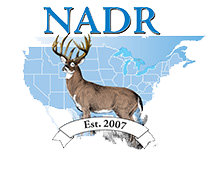RAISING CLASSIC WOODLAND TROPHIES WITH FAMILY ORIENTED SERVICE
Some of the key antler growth traits that we intentionally track are, brow tine length, mass, beam length’s, and G2 forward tine lengths. This helps us see trends over time and make better breeding decisions.
Body Weight(s) are tracked for multiple reasons , but primarily health and disease resistance reasons. We track fawn weight at birth, weaning weight and annual weight of adults, to be able to trace back weaning weights and what can be expected of offspring.
This record is to track each individual doe year after year on whether or not she took to AI, took to “back up” buck or did not breed at all.
This is tracked to overall calmness and behaviors such as when in the pen with others, at birth as a fawn through adulthood, handling behaviors in the corral, and when others are around in the pen.
This tracking recordkeeping includes behaviors prior to birthing, through birthing, accepting fawns, keeping fawns healthy after birth, and being able to adopt other fawns.
Here we track the number of buck vs. doe fawns born each year, for every doe.
This track record keeps number of fawns born each year, per doe. (singles, twins, triplets, quads).



